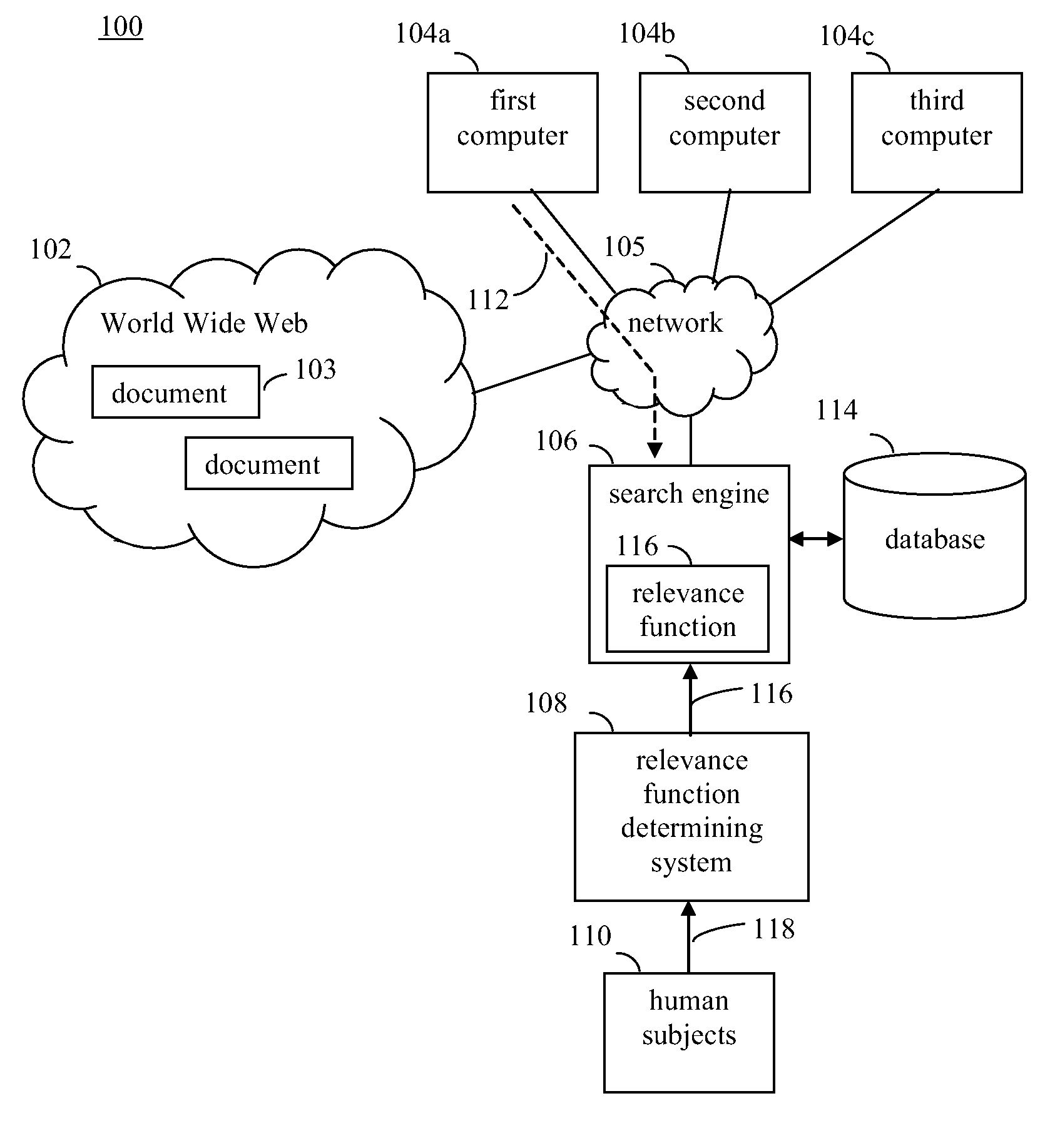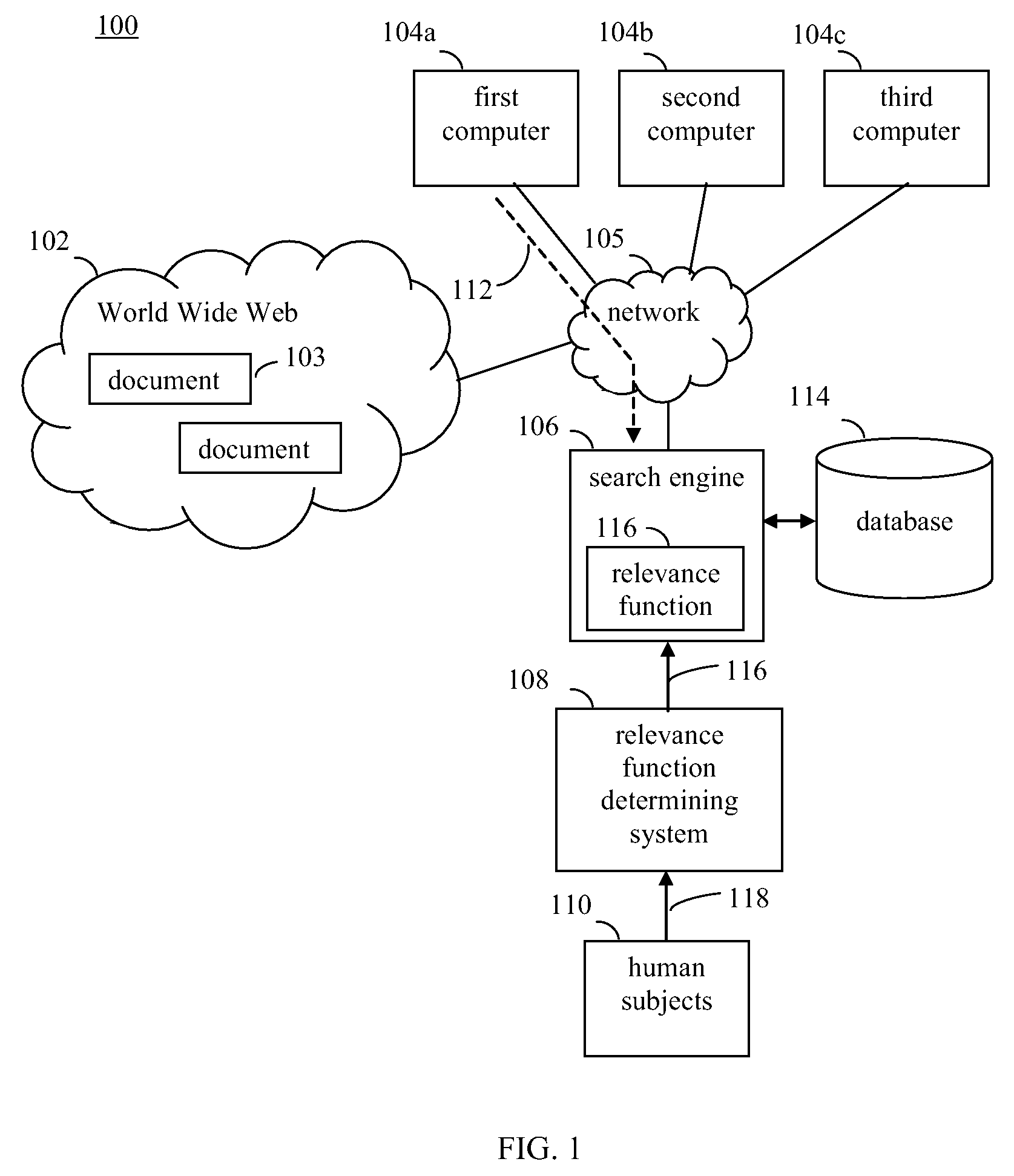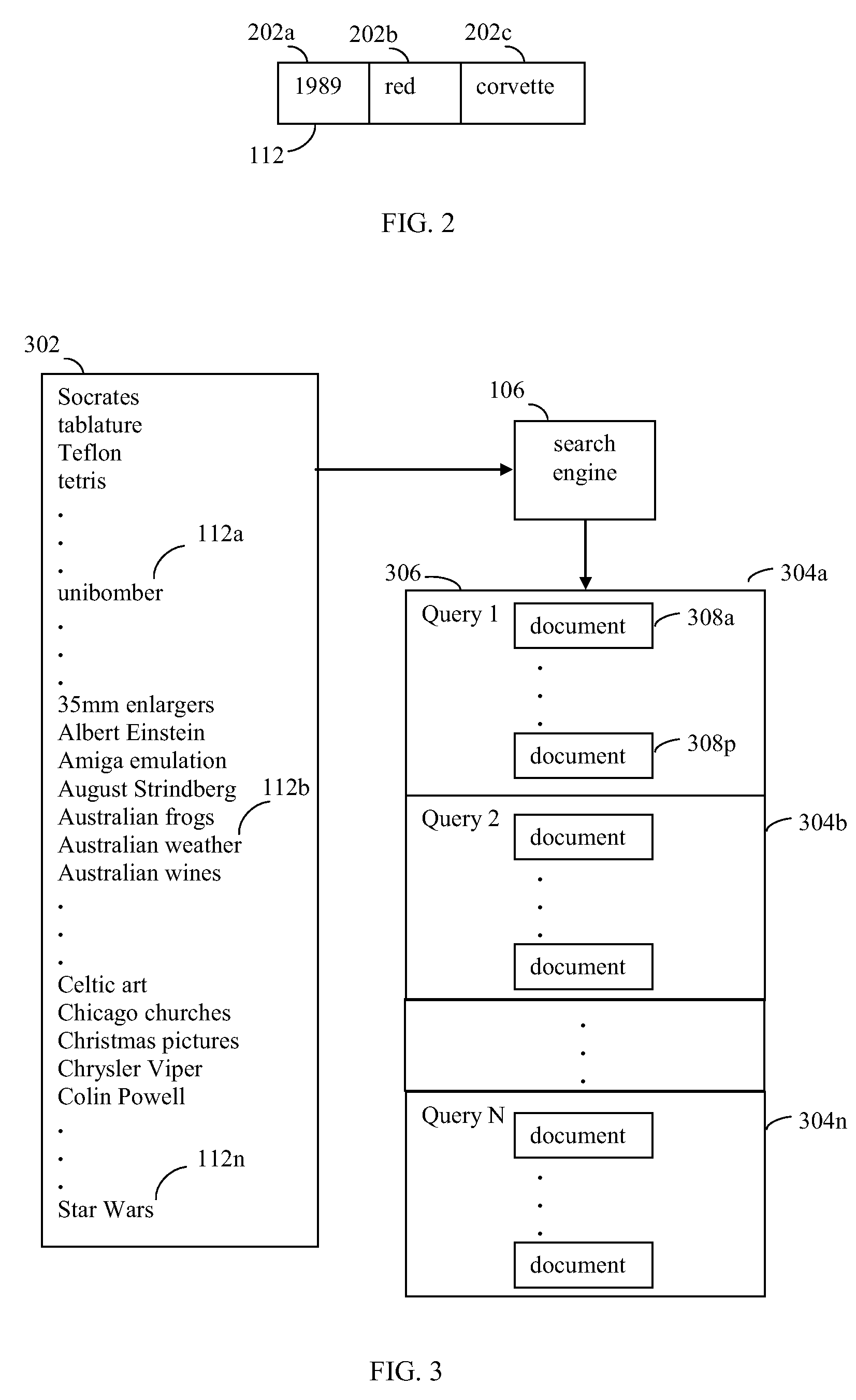Determining a relevance function based on a query error derived using a structured output learning technique
a learning technique and relevance function technology, applied in the field of improving the ranking of search results, can solve the problems of conventionally difficult to find the coefficients of the ranking function, and achieve the effect of optimizing efficiently
- Summary
- Abstract
- Description
- Claims
- Application Information
AI Technical Summary
Benefits of technology
Problems solved by technology
Method used
Image
Examples
example embodiments
[0043]The example embodiments described herein are provided for illustrative purposes, and are not limiting. Further structural and operational embodiments, including modifications / alterations, will become apparent to persons skilled in the relevant art(s) from the teachings herein.
[0044]FIG. 1 shows a document retrieval system 100, according to an example embodiment of the present invention. System 100 includes a search engine 106, a relevance function determining system 108, and a database 114. In system 100, one or more computers 104, such as first-third computers 104a-104c, are connected to a communication network 105. Network 105 may be any type of communication network, such as a local area network (LAN) or a wide area network (WAN), or combination of communication networks. In embodiments, network 105 may include the Internet and / or an intranet. Computers 104 can retrieve documents from entities over network 105. In embodiments where network 105 includes the Internet, a colle...
example computer implementation
[0118]The embodiments described herein, including systems, methods / processes, and / or apparatuses, may be implemented using well known servers / computers, such as computer 802 shown in FIG. 8. For example, relevance function determining system 108 shown in FIG. 1 and in FIG. 7, flowchart 400 shown in FIG. 4, and flowchart 600 shown in FIG. 6, can be implemented using one or more computers 802.
[0119]Computer 802 can be any commercially available and well known computer capable of performing the functions described herein, such as computers available from International Business Machines, Apple, Sun, HP, Dell, Cray, etc.
[0120]Computer 802 includes one or more processors (also called central processing units, or CPUs), such as a processor 806. Processor 806 is connected to a communication bus 804. In some embodiments, processor 806 can simultaneously operate multiple computing threads.
[0121]Computer 802 also includes a main or primary memory 808, such as random access memory (RAM). Primar...
PUM
 Login to View More
Login to View More Abstract
Description
Claims
Application Information
 Login to View More
Login to View More - R&D
- Intellectual Property
- Life Sciences
- Materials
- Tech Scout
- Unparalleled Data Quality
- Higher Quality Content
- 60% Fewer Hallucinations
Browse by: Latest US Patents, China's latest patents, Technical Efficacy Thesaurus, Application Domain, Technology Topic, Popular Technical Reports.
© 2025 PatSnap. All rights reserved.Legal|Privacy policy|Modern Slavery Act Transparency Statement|Sitemap|About US| Contact US: help@patsnap.com



